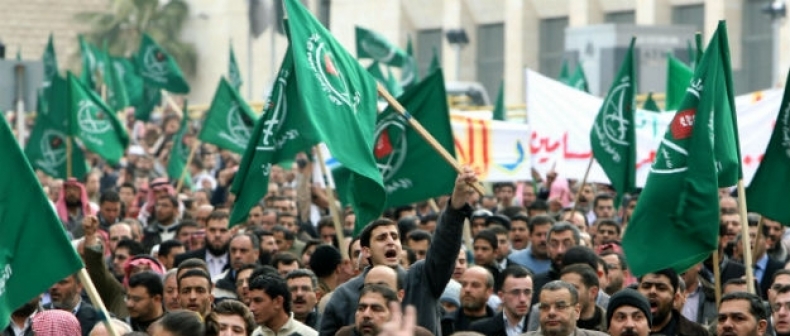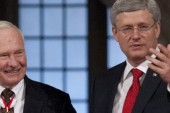
image: foreignpolicy.com
“This could be one of those moments where everything could suddenly end, we thought as we set out to leave. But our fear was greater than anything else. We held hands and ran for our lives through a storm of gunfire. We left behind dozens trapped in the hospital, which only an hour later would be attacked by police and set on fire.” – Mada Masr, “First-Hand Account of the Rabea Dispersal”
In the early hours of August 14, Egyptian security forces unleashed tear-gas and gunfire on pro- Morsi demonstrators gathered at sit-ins at Rabea al-Adaweya Square in Cairo and Nahda Square in Giza. According to statistics provided by Egypt’s Ministry of Health, 638 people were killed and over 4,000 others wounded in the deadly military crackdown, bringing large-scale death and martyrdom to Islamism’s front door.
While pangs of anguish reverberate across the world, many wonder what the consequences of such drastic violence will be for the adherents of a party whose history of persecution has not only spread its ideology across continents, but whose affiliated organizations have established themselves as an authority on Islam in North America.
The migration of the Muslim Brotherhood to Canada has been a well-known yet seldom discussed topic. A group borne into flight from Egypt during the 1960s, Canada, along with the United States, became home to many political exiles of the Muslim Brotherhood. Following a 1954 assassination attempt on then Egyptian President Gamal Abdel Nasser by the group’s militant wing, Muslim Brotherhood members were imprisoned, tortured —and leading political philosophers including Sayyid Qutb executed. Many left Egypt for North America during this period, bringing with them a tide of political Islam associated with their struggle for an Islamic society in Egypt.
Cold War tensions heightened and were central to the Muslim Brotherhood’ s tiff with Nasser. Having joined hands with Wahabi organizations (a socially conservative form of Islam followed by the Saudi monarchy) during the Muslim League conference of 1962, the Muslim Brotherhood positioned itself in opposition to its country’s president in the Cold War divide. Following this shift, the group directed its efforts towards a gradualist form of establishing an Islamic state through education, social services and missionary efforts geared towards Muslims themselves–warning them of the irreligiosity of pan-Arabism and the socialism of their leaders.
For most of Egypt’s history, the Muslim Brotherhood’s vision of an Islamist state was not a mainstream concept to much of Egypt’s over 90% Sunni-Muslim population. In fact, despite waves of popularity that the party received throughout the decades, Mohamed Morsi from the Brotherhood’s Freedom and Justice Party won only 51 per cent of the vote in the 2012 elections. In his one year in office, Morsi’s government was unable to appropriately address dissenting views and minority rights, especially in the drafting of the country’s constitution. Morsi was ousted at the hands of the military following mass demonstrations on June 30.
While the Muslim Brotherhood faces a robust opposition in Egypt, it faces dissimilar challenges in North America, particularly in Canada where the party’s affiliates represent an institutionalized and overwhelmingly authoritative voice on Islam.
Professor at Harvard Divinity School, Leila Ahmed, has written a comprehensive look into the party’s migration to North America in her book entitled A Quiet Revolution: The Veil’s Resurgence, from the Middle East to North America.
Ahmed explains that supporters of the Muslim Brotherhood along with Islamist counterparts like Pakistan’s Jamat-i-Islami, set up Muslim Student Associations (MSA) on campuses across North America beginning in the 1960s. The organization created outreach events geared towards Muslims coming from immigrant groups, helping them to establish an Islamic identity in their new surroundings. The group also initiated social services and programs for poor and disadvantaged groups–an essential component of their activities in Egypt prior to asylum.
The Islamic Society of North America (ISNA) was formed in 1981 to meet the needs of the MSA’s graduating population and to reach out to a wider Muslim community. By 1994, “39 per cent of mosques in the United States described themselves as affiliated with ISNA, 19 per cent with W.D Mohammed, 5 per cent with Tabligh-i-Jamaat and 4 per cent with ICNA, while 24 per cent described themselves as unaffiliated,” Ahmed writes. Undoubtedly, the number of mosques affiliated with ISNA has increased in the past years
Although congregations may have forged paths different from the political foundations of ISNA in the 1960s, the Islamist foundations of the institution generally remain unchallenged and intact. Moreover, journalists and government officials in North America often refer to ISNA as a source of information on Islam in North America. In the absence of an alternative Muslim voice organized in such an efficient manner, today, ISNA has become the normative expression of Sunni- Islam practiced in North America.
Because of this, the status of the Muslim Brotherhood in North America remains fundamentally different from its marginalized status in Egypt. And in face of the return of military repression in Egypt, members of left and liberal opposition groups–along with younger members of the Muslim Brotherhood, have urged the party to pursue a new direction of inclusivity distinct from its bitter past.
Many others have urged the party to develop a consistent position on the use of violence. Unlike Salafist political groups in the Middle East, in the post- Nasser period the Muslim Brotherhood had generally adopted a gradualist approach to the implementation of shariah in Islamic societies, shunning the use of violence to a large degree. However, the party’s escalating turn towards violence following the deposal of President Morsi has become a cause of concern. Reports of militant Islamist flags of groups affiliated with Al-Qaeda being waved during the protests were a source of concern. Shortly after the military’s bloody crackdown, it has been reported that supporters of the Muslim Brotherhood burned down four churches and attacked 13 others. Forty-three policemen were killed, more than 140 wounded, and 21 police stations attacked.
In a statement entitled; “Non-peaceful Assembly Does Not Justify Collective Punishment,” signatories from various Egyptian human rights groups condemned the military’s killings of people at the sit-ins, but were clear about the condemnation of the Muslim Brotherhood’s use of violence and sectarian targeting of Egypt’s Christian minority.
As a new tide of intra-Muslim conflict continues to fester populations in Syria, Egypt, and Pakistan, there is perhaps no better time for the Muslim Brotherhood to think of directing its efforts towards more inclusivity and civic engagement. In the absence of an opposition to Islamism currently dividing the Middle East, how the Muslim Brotherhood’s affiliated organizations will continue to function in North America will depend largely on how people respond to a history of their engagement with the party, the authority it has in their lives, and how the party will position itself in a potential second coming.
____
Sana Hasmi is a Toronto-based writer.
For more, follow us on Twitter @TorontoStandard and subscribe to our newsletter.














